Retinol for the face: what it is, how to use, effects, what to combine with
What is retinol and how do you implement it into your skincare routine? You're about to find out.


Learn more about our editorial process
.

Learn more about our editorial process
.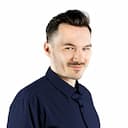

Learn more about our editorial process
.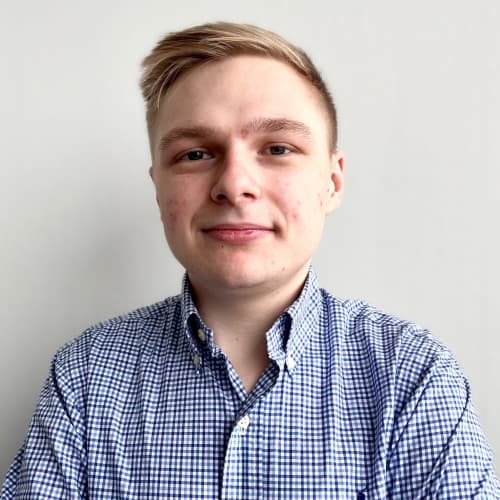

Learn more about our editorial process
.
Why you can trust us
Articles on Natu.Care are written based on scientific research, data from government websites and other reliable sources. The texts are written in cooperation with doctors, nutritionists and other health and beauty experts. Articles are reviewed before publication and during significant updates.
.Learn more about our editorial process
.Information about advertisements
Content on Natu.Care may contain links to products from the sale of which we may receive a commission. When creating content, we adhere to high editorial standards and take care to be objective about the products discussed. The presence of affiliate links is not dictated by our partners, and we select the products we review ourselves completely independently.
.Learn more about our terms and Conditions
.You want to start an uneven fight against wrinkles. You're looking for a cosmetic superhero to fix what's starting to spoil the passage of time. And here it appears - retinol.
.
On beauty forums and groups, the paeans to the wonderful properties of retinol continue unabated. On the other hand, like a shadow, there is always a thread about irritation, burning, redness, dryness... Is this retinol the hero or the villain after all?
.
From this article you will learn:
- What is retinol. .
- What properties it has and what effects you can expect when using it. .
- How to introduce it into your skincare routine to prevent irritation.
- What to avoid when using it.
- What to avoid during a retinol treatment. .
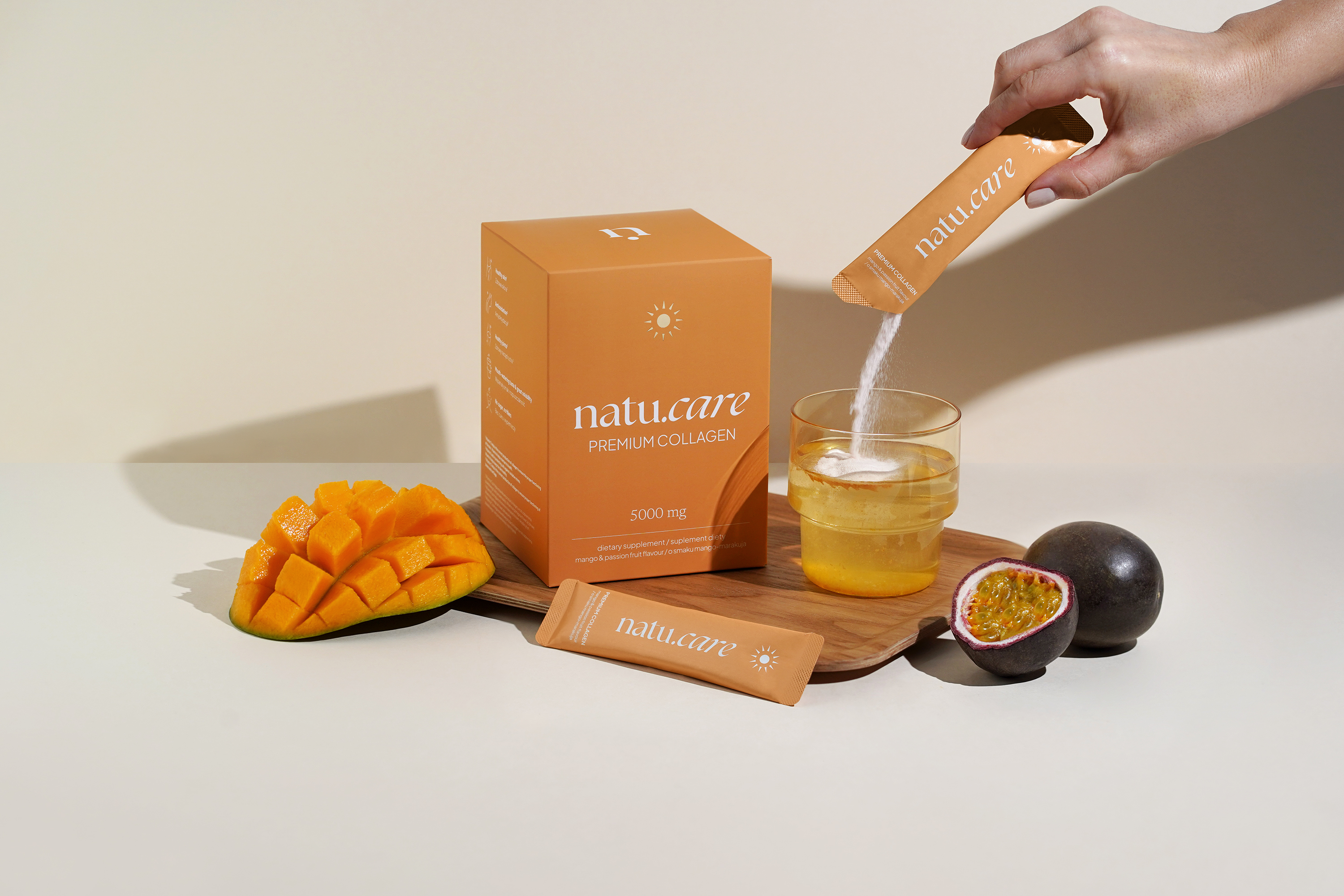
Sprawdź, za co pokochały go tysiące klientek Kolagen Premium (5000 mg) mango-marakuja -15% z kodem BLOG15
Natu.Care Kolagen Premium 5000 mg, mango-marakuja
Natu.Care Kolagen Premium dla zdrowia stawów, skóry, paznokci i włosów. Najlepsza przyswajalność. Optymalna dawka 5 000 lub 10 000 mg. Przebadany przez niezależne laboratorium.
Zobacz więcej
Wybrałam kolagen Natu.Care, ponieważ miał super opinie – a to było dla mnie bardzo ważne! Odkąd go stosuję, moja skóra znacznie się poprawiła i jest nawilżona, a na głowie pojawiły się nowe "baby hair".@Kasia S.
See also:
- What is benzoyl peroxide .
- What is niacinamide
- All about hyaluronic acid
- Vitamin C for the face
- Best anti-wrinkle cream
- Best moisturising cream
- Best face serum
What is retinol?
.
Retinol is vitamin A. In simplest terms. And to complicate matters a little, it is this vitamin that needs to be looked at.
Vitamin A is a group of chemical compounds called retinoids. There are three generations of retinoidsand:
- aromatic compounds, .
- monoaromatic compounds, .
- polyaromatic compounds, .
Retinoids perform a number of important functions in the body, enabling it to function properly. In particular, they have beneficial effects on vision, the immune system and proper cell divisionand.
Retinol belongs to the monoaromatic retinoids and has the highest biological activity of all generations. This means that it acts most effectively. You supply it to your body every day with the foods you eat. It is its action from the inside that gives your body the most. But that's not all.
Because of its properties, retinol is breaking records when it comes to its use in cosmetics. However, in order for it to work in the skin, it needs to convert into retinoic acidand. In fact, it is retinoic acid that is responsible for all the beneficial properties of retinol and its derivatives.
Retinol versus retinal
.
Retinol is the primary form of vitamin A used in cosmetics. It has a strong effect on the skin and in some cases can irritate it. It needs two transformations (retinol - retinal - retinoic acid)and to convert to retinoic acid.
Retinal is a derivative of retinol, or retinol that has undergone its first transformation. It therefore needs only one transformation to convert to retinoic acid. As a result, it has less irritant potential - it acts faster and more gentlyand.
Retinol a retinoid
.
Retinoids are the chemical compounds that make up vitamin A. Retinol is the most effective of these and is often found in cosmetics. It regulates exfoliation, renews the epidermis and lowers melanin levels, which helps to minimise unwanted discolouration.
Also, retinol strongly nourishes the skin, making it more supple, which helps to reduce wrinklesand.
.
Retinol versus retinyl palmitate
.
Retinyl palmitate is an ester of retinol. It is one of the derivatives of retinol, but has low biological activity as it does not convert to retinoic acid. Although it is a safe substance, using cosmetics with this ingredient, you are unlikely to get the effects you expect from vitamin Aand.
Vegetable retinol
.
Vegetable retinol is referred to as a substance called bacuchiol. Bakuchiol is not a derivative of retinol. It is a completely different chemical compound - meroterpene phenol - extracted from plants (whereas the retinol present in cosmetics is isolated synthetically). Because of its similarities in action, bacuchiol has been hailed as a plant-based retinoland.
.
It is worth adding that bacuchiol is gentler on the skin than retinol and does not react with sunlight. Therefore, if your skin is intolerant to retinol or any of its derivatives, look out for cosmetics with bacuchiol.
Worth mentioning.
Effect of retinol
.
Retinol influences cell division in the body and therefore also the formation of skin cells. It promotes the production of fibroblasts and is needed for the synthesis of hyaluronic acid, elastin and collagen. All of these substances have an impact on the appearance and condition of our skin.
Retinol has antioxidant properties - it counteracts the negative effects of free radicals. It also regulates the sebaceous glands, which prevents the appearance of blackheads and other imperfections.
Retinol, through gentle exfoliation, stimulates the skin to renew itself and also helps eliminate wrinkles, adding smoothness, elasticity and firmness to the complexion. Applying retinol to the face is one of the most effective ways to counteract signs of ageing and prevent imperfectionsand.
Promotes wrinkle smoothing
.
Retinol stimulates skin cells to remodel, strengthens the epidermal barrier and protects collagen fibres from damage. On top of this, it also stimulates the skin to produce new collagen and elastin molecules. In this way, it prevents the formation of wrinkles and the deepening of existing onesand.
Because it also prevents the epidermis from losing water, the complexion is better hydrated which also translates into a reduction in the appearance of shallower wrinkles .
.
This all sounds like magic, but remember that no cream or serum will fill in the visible wrinkles. You can only achieve such a result with aesthetic medicine treatments. Cosmetics can at most slightly reduce the appearance of shallow changes associated with ageing.
The primary action of the skincare you apply to your face is to stop (actually slow down) the formation of wrinkles and prevent the deepening of those that already exist.
If you would like to do something else for your skin, ensure you get as many vitamins and minerals as possible along with your diet. Nutrients delivered to the body from within work most effectively. You may also want to consider collagen supplementation to stimulate its synthesis in the skin.
Natu.Care Collagen Premium 5000 mg, mango & passion fruit
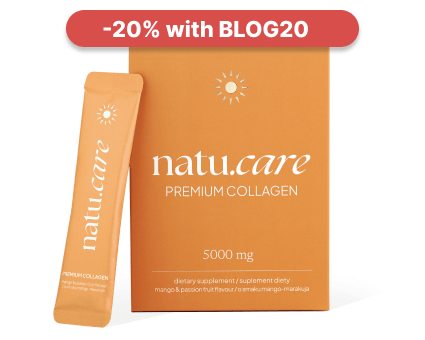
- Collagen content: 5000 mg marine collagen hydrolysate
- Additional active ingredients: vitamin C, low molecular weight hyaluronic acid (and L-theanine and coenzyme Q10 in cocoa flavoured collagen or vitamin A and vitamin E in mango–passion fruit flavoured collagen)
- Form: powder sachets
- Dose: 1 sachet per day
- Sufficient for: 30 days
Product description
Fish collagen from the Natu.Care brand in a dose of 5000 mg, based on certified ingredients of the best quality. Regular supplementation will positively influence the appearance of the skinóry, hairów and nails – they will be rebuilt and strengthened from the inside.
In addition to collagen, which is valuable for health and beauty, it also offers other active ingredients that help to maintain a youthful complexion, shiny hair and strong nails.
The formula contains a sufficient portion of the active ingredient to positively affect joints, the musculoskeletal system and immunity.
Natu.Care Premium Collagen is available in two flavours – Cacao Bloom and Rise&Shine. Both formulas are based on the following active ingredients: marine collagen hydrolysate, wild roseóbud extract and hyaluronic acid.
Additionally, Cacao Bloom contains natural L-theanine, coenzyme Q10 and defatted Dutch cacao. Rise&Shine instead contains vitamin E and vitamin A.
These are the best collagens in the world.
These best fish collagens on the market also rós taste – Cacao Bloom is a treat for chocolate lovers. Rise&Shine will appeal to those whoólike the refreshing taste of mangoófruit and passion fruit.
Pros and cons
Pros:
- Vitamin C supports the body's collagen production, enhancing its effectiveness.
- An effective dose of hyaluronic acid, which additionally supports skin hydration and joint health.
- Fish collagen absorbs 50% better. Additionally, the manufacturer specifies the fish species it is sourced from (Atlantic cod).
- The composition has been tested by the independent and accredited J.S. Hamilton laboratory.
- MSC (Marine Stewardship Council) quality certification, which confirms that the collagen source supports sustainable fishing practices.
Cons:
- None.
Additional information
Natu.Care's fish collagen receives praise for its delicious taste. You won't find the fishy aftertaste that often comes through in other collagens. Plus, you have two tasty flavors to choose from: cocoa and mango-passionfruit.
Active ingredients like coenzyme Q10, hyaluronic acid, and natural L-theanine provide anti-inflammatory and antioxidant benefits while slowing down aging processes.
User review
Super, after about 6 weeks of use, the skin on my face became noticeably firmer. Wonderful taste.
Ania ZalewskaNatu.Care customer
Exfoliates what is unnecessary
.
The use of retinol promotes the natural remodelling of the epidermal layer by enhancing the removal of dead cellsand. Because the exfoliating action of retinol is not abrupt, your skin will regain a radiant glow day after day, with less risk of irritation than with acids, for example.
Fights hyperpigmentation
.
Retinol regulates the distribution of melanin in the skin and reduces the activity of melanocytes - the cells responsible for pigmentation. As a result, it prevents the formation of hyperpigmentation. In addition, its gently exfoliating action can help you reduce the appearance of existing onesand.
.
Helps eliminate blackheads
.
Thanks to its ability to influence cell function, retinol can reduce sebaceous gland activity and prevent excessive sebum production. Combined with its exfoliating properties, vitamin A will help you get rid of blackheads and allow you to enjoy a clean, fresh complexionand.
Promotes acne treatment
.
First, an important note: acne is a skin condition that has many varieties, and their treatment varies dramatically. If you have or suspect you have this ailment, the wisest thing to do is to see a dermatologist. Treating it on your own may make your skin condition worse.
Retinol will not help with all forms of acne - with some it may even be harmful. Nevertheless, it will be helpful against the acne lesions typical of acne vulgaris - pimples.
Retinol will not help all forms of acne - with some it may even harm you.
This is due to the fact that retinol prevents excessive keratinisation of the sebaceous gland mouths and regulates sebum secretion. And it is its excessive production that promotes the formation of pimplesand.
.
Retinol has also been shown to have antibacterial properties, so it can reduce skin inflammation. All of this can help you deal with pimples on your face.
Effects of using retinol
.
By stimulating collagen production and protecting existing fibres, retinol helps the skin regain its softness and healthy appearance. Its use makes the complexion smoother and firmer.
Positive changes, such as an improvement in skin texture and hydration, can be seen after 4-6 weeks. You will need to wait longer for a reduction in wrinkles or hyperpigmentation - according to research, around 2-3 monthsand.
The effects of using retinol areand:
.
- .
- strengthening the protective layer of the epidermis, .
- protection against free radicals causing oxidative stress, .
- prevention of water loss through the epidermis, .
- prevention of wrinkle formation, .
- prevention of hyperpigmentation, .
- brightening existing hyperpigmentation, .
- softening and smoothing the skin, .
- regulation of sebum secretion, .
- cleaning of the skin, .
- reducing the number of pimples and blackheads, .
Side effects of retinol use
.
Retinol is a highly active substance, so it can cause irritation (especially when used incorrectly).
The most common side effect of retinol treatment is dry and flaky skinand. This has to do with the exfoliating properties of this substance. To prevent this, complement your skincare with cosmetics that work to moisturise and rebuild the skin's natural hydrolipidic layer.
.
If you feel a burning sensation after applying retinol and your skin is reddened, it is possible that you have developed a hypersensitivity to retinol. If this is the case, you should refrain from using this ingredient in cosmetics. Instead, you can try the bacuchiol-based skincare I mentioned earlier.
Important
When introducing a new skincare product, always do a sensitisation test. Apply the product to a small patch of skin, in an inconspicuous area, and see if you get an allergic reaction.
Another fairly common effect of retinol use is a rash of pimples. Fortunately, this is usually a temporary condition caused by the remodelling of the epidermal layers. Any impurities that have been accumulating in the skin come out through this. You could say that the skin is clearingand.
To alleviate these unpleasant symptoms, it is most often sufficient to reduce the frequency with which retinol cosmetics are used. It is also important to know how to start taking care of vitamin A and its derivatives.
How to use retinol?
.
Your skin needs to get used to retinol. This will help you avoid dryness, irritation and - at an early stage - a rash of pimples. When introducing a cosmetic with retinol to your skincare regimen, use it 1-2 times a week at first.
Depending on the reaction of your skin, after a week or two, increase the frequency to 3 times a week. You can stop at applying retinol or its derivatives every other day, or slowly increase the number of applications to 5 per week.
It is important to use the cosmetic every day.
It is important to apply retinol and its derivatives in the evening, as it does not like the sun. Also remember to use sunscreen in both summer and winter during your treatment.
Retinol is a good choice.
Which retinol to start with?
.
Choosing your first retinol cosmetic? Change your search to retinal. This is a retinol derivative that is more stable and much gentler on the skin. Retinal shows much less risk of irritation, and works just as effectivelyand. The appropriate concentration of retinal for a first treatment is 0.01-0.05%.
No matter which substance you opt for, choose a product with the lowest possible concentration of the active ingredient. As you already know, the skin needs to get used to vitamin A and attacking it right away with a high concentration can end up being unpleasant.
Retinol in summer...
.
Retinol treatments are safest in autumn and winter, but it is not true that they cannot be used in summer. Just remember to choose formulations with lower concentrations during this period. Use them at night, and during the day, protect your skin with sunscreen cream with an SPF no lower than 50.
If you switch to a lower concentration for the summer time, then in autumn and winter there is no need to get your skin used to retinol again and you can usually just switch to a high concentration with impunity without the risk of irritation..
 .
.
Katarzyna SrebrCosmetologist
.
Retinol: sandwich method
.
Sandwich method can work well for extremely sensitive skin. To apply it:
- Apply moisturiser to cleansed face and wait a few minutes for it to absorb.
- Apply moisturiser to cleansed face and wait a few minutes for it to absorb.
- Apply a cosmetic with retinol and wait about half an hour.
- Apply a cosmetic with retinol and wait about half an hour.
- Ronate the application of the moisturiser. .
And there you have it. You've just made a sandwich of creams on your face. Just make sure that such quantities of cosmetics don't act to clog your skin.
Retinol: what to combine with and what not to combine with?
.
See below for a detailed discussion of how retinol interacts with other cosmetic ingredients (and more), but I've put together a little download for you to start.
This is what not to combine with retinol:
.
- salicylic acid, .
- azelaic acid, .
- glycolic acid, .
- other fruit acids (AHA), .
- β-hydroxy acids (BHA), .
- solarium, .
And here's a table of substances you can include in your skincare regimen when it contains retinol - along with rules on how to do it safely.
|
You can combine with retinol |
Combination rules |
|
Hyaluronic acid |
None |
|
Apply it at other times of the day, preferably in the morning. |
|
|
Use cosmetics with low concentrations of niacinamide. |
|
|
Polyhydroxy acids (PHA) |
Apply on days other than retinol. |
Retinol and hyaluronic acid
This is a completely safe combination. You can use one cosmetic containing both ingredients or apply them separately. Moisturising hyaluronic acid is the perfect complement to retinol treatment, which can dry out the skin<a class=">and.
Retinol and vitamin C
.
Vitamin C will be a great addition to a skincare regimen containing retinol - it will have an antioxidant effect and will further aid in the removal of hyperpigmentation. However, remember not to apply it at the same time of day as retinol.
.
It is best to apply ascorbic acid or its derivatives in the morning and retinol in the evening. If you apply these substances together, they will neutralise each other's effectsand. The exception to this is the latest generation of cosmetics, which have succeeded in using retinol and vitamin C derivatives that do not have a neutralising effect on each other. Or at least that is what the manufacturers claim.
Retinol and niacinamide
.
Niacinamide helps to rebuild the skin's natural protective barrier and, in turn, influences skin hydration. It is therefore like the next puzzle in the skincare jigsaw: retinol helps to replace old skin cells with new ones (exfoliates), and niacinamide helps to make them strong and healthyand.
Important
.In high concentrations, niacinamide can also irritate, so when using retinol, choose cosmetics with a low niacinamide content.
..
When choosing a cosmetic with niacinamide to supplement your retinol treatment, however, pay attention to the other ingredients in the product. This is because niacinamide is often combined with other irritants, such as acids. And these may not like each other very much with retinol...
.
Retinol vs acids
.
Retinol is a potent active substance with exfoliating properties. It is not recommended to combine two or more ingredients showing similar effects in skin care (as the popular saying goes: don't put two mushrooms in a borscht).
Acids are some of the main ingredients helpful in the fight against acne vulgaris. As you already know, retinol can also help treat skin eruptions. However, the combination of these two substances can be very irritating to the skinand. Therefore, when choosing your skincare on your own, choose only one of these ingredients.
Which acids to watch out for, with retinol treatment?
.
- Salicylic acid, .
- Azelaic acid, .
- Glycolic acid, .
- AHA, BHA acids, .
An exception to this rule are PHA acids (e.g. lactobionic acid or gluconolactone), which are the mildest of the acids. Their properties include soothing and moisturising rather than exfoliating, so if your skin is not very sensitive, this combination may work well. To be safe, use PHA acids on days when you do not apply retinol.
Generally, rules are there to be broken (just have to do it with your head). There are cases where combining retinol and acids in one treatment will work, but always should be done under the guidance of a dermatologist or cosmetologist. Don't try it on your own - there are really too many people who have burned themselves with acids during home treatments.
Retinol vs... tanning beds
.
Retinol can increase your skin's sensitivity to UV radiation, so refrain from sunbathing and visits to tanning beds when using cosmetics with this ingredientand. If you absolutely want to enjoy the sun, stop using cosmetics with retinol a few days beforehand and resume using them a few days after your visit to the tanning bed. Or opt for a healthier version of a tan and achieve it with self-tanner.
Retinol in pregnancy and lactation
.
The use of cosmetics with vitamin A during pregnancy and lactation is discouraged. Retinol can penetrate the mother's body and affect the normal development of the babyand.
Summary
.
- Retinol is one of the retinoids, or compounds that make up vitamin A.
- Retinol is the most biologically active form of vitamin A, which is why it has found widespread use in cosmetics.
- Retinol is the most biologically active form of vitamin A.
- Retinol is appreciated for its anti-wrinkle and exfoliating effects. .
- Vitamin A protects collagen fibres from damage and stimulates the production of new ones.
- Retinal is a derivative of retinol - gentler on the skin but just as effective in its action.
- Retinol can be irritating and drying to the skin, so choose low concentrations when introducing it into your skincare.
- Cosmetics with retinol should not be combined with acids with an exfoliating effect - this can lead to severe irritation. .
- The effect of retinol will be perfectly complemented by hyaluronic acid and niacinamide. .
- While on retinol treatment, avoid sunbathing and visits to a solarium. Apply cosmetics with vitamin A in the evening, and don't forget to use sunscreen during the day. .
FAQ
.Can retinol be used in the summer?
.Yes, retinol can be used in the summer, as long as you do not plan to sunbathe. During spring and summer, choose cosmetics with lower concentrations of retinol or with its milder and more stable form, retinal. Use these in the evening, and protect your skin during the day with a UV filter cream.
Can retinol be used daily?
.While on retinol treatment, it is recommended to take at least one day off per week to allow the skin to recover. When starting your skincare vitamin A, apply it 1-2 times a week for the first two weeks. Then slowly increase the frequency of application to around 5 times a week.
What concentration of retinol should you start with?
.It is best to start with cosmetics with a retinol derivative - retinal. It has a much lower predisposition to irritation. If you want to opt for retinol, choose the lowest concentration possible - 0.2 or 0.3%.
.Should a cream be applied over retinol?
For sensitive skin, you can apply a retinol moisturising cream or a soothing cream over retinol. After applying the retinol cosmetic, wait about half an hour for it to absorb well. As a dressing cream after retinol, a good option cosmetics with hyaluronic acid, niacinamide and ceramides.
First retinol or hyaluronic acid?
.Hyaluronic acid applied before retinol can reduce its effectiveness, so it is recommended to apply it second. The exception to this is very sensitive complexions - applying a cream with hyaluronic acid beforehand can protect them from irritation.
Another question is whether to use retinol at all in such cases. It may be worth trying to switch to a skincare regimen based on milder ingredients, such as bacuchiol.
The skin should be protected from irritation.
Retinol and niacinamide: how to combine them?
.The easiest way to combine retinol and niacinamide is to use a cosmetic containing both. Then you can be sure that their concentrations and forms will be well matched. If you want to use them in separate cosmetics, make sure that the concentration of niacinamide is not too high, because then it can act as an irritant.
Can retinol be used under the eyes?
.Retinol can be used under the eyes. However, cosmetics with a low concentration of this substance should be chosen, as the skin around the eyes is very delicate. Be sure to reach for cream dedicated to the eye area, as these cosmetics are subject to completely different standards. It is also advisable to apply moisturising cream after the application and absorption of such a cosmetic, in order to prevent dryness of this sensitive zone.
.
Sources
.See all
.Armitage, H. (2020, August 6). Does retinol deserve the hype? A Stanford dermatologist weighs in. Scope. https://scopeblog.stanford.edu/2020/08/06/does-retinol-deserve-the-hype-a-stanford-dermatologist-weighs-in/
Babamiri, K., & Nassab, R. (2010). Cosmeceuticals: The Evidence Behind the Retinoids. Aesthetic Surgery Journal, 30(1), 74-77. https://doi.org/10.1177/1090820X09360704
Chaudhuri, R. K., & Bojanowski, K. (2014). Bakuchiol: A retinol-like functional compound revealed by gene expression profiling and clinically proven to have anti-aging effects. International Journal of Cosmetic Science, 36(3), 221-230. https://doi.org/10.1111/ics.12117
Kafi, R., Kwak, H. S. R., Schumacher, W. E., Cho, S., Hanft, V. N., Hamilton, T. A., King, A. L., Neal, J. D., Varani, J., Fisher, G. J., Voorhees, J. J., & Kang, S. (2007). Improvement of Naturally Aged Skin With Vitamin A (Retinol). Archives of Dermatology, 143(5), 606-612. https://doi.org/10.1001/archderm.143.5.606
Kang, S., Duell, E. A., Fisher, G. J., Datta, S. C., Wang, Z.-Q., Reddy, A. P., Tavakkol, A., Yi, J. Y., Griffiths, C. E. M., Elder, J. T., & Voorhees, J. J. (1995). Application of Retinol to Human Skin In Vivo Induces Epidermal Hyperplasia and Cellular Retinoid Binding Proteins Characteristic of Retinoic Acid but Without Measurable Retinoic Acid Levels or Irritation. Journal of Investigative Dermatology, 105(4), 549-556. https://doi.org/10.1111/1523-1747.ep12323445
Kong, R., Cui, Y., Fisher, G. J., Wang, X., Chen, Y., Schneider, L. M., & Majmudar, G. (2016). A comparative study of the effects of retinol and retinoic acid on histological, molecular, and clinical properties of human skin. Journal of Cosmetic Dermatology, 15(1), 49-57. https://doi.org/10.1111/jocd.12193
Milosheska, D., & Roškar, R. (2022). Use of Retinoids in Topical Antiaging Treatments: A Focused Review of Clinical Evidence for Conventional and Nanoformulations. Advances in Therapy, 39(12), 5351-5375. https://doi.org/10.1007/s12325-022-02319-7
Moghimipour, E. (2012). Hydroxy Acids, the Most Widely Used Anti-aging Agents. Jundishapur Journal of Natural Pharmaceutical Products, 7(1), 9-10. https://www.ncbi.nlm.nih.gov/pmc/articles/PMC3941867/
Motamedi, M., Chehade, A., Sanghera, R., & Grewal, P. (2022). A Clinician's Guide to Topical Retinoids. Journal of Cutaneous Medicine and Surgery, 26(1), 71-78. https://doi.org/10.1177/12034754211035091
Mukherjee, S., Date, A., Patravale, V., Korting, H. C., Roeder, A., & Weindl, G. (2006). Retinoids in the treatment of skin aging: An overview of clinical efficacy and safety. Clinical Interventions in Aging, 1(4), 327-348. https://www.ncbi.nlm.nih.gov/pmc/articles/PMC2699641/
Puyana, C., Chandan, N., & Tsoukas, M. (2022). Applications of bacuchiol in dermatology: Systematic review of the literature. Journal of Cosmetic Dermatology, 21(12), 6636-6643. https://doi.org/10.1111/jocd.15420
Ruamrak, C., Lourith, N., & Natakankitkul, S. (2009). Comparison of clinical efficacies of sodium ascorbyl phosphate, retinol and their combination in acne treatment. International Journal of Cosmetic Science, 31(1), 41-46. https://doi.org/10.1111/j.1468-2494.2008.00479.x
Tang, S.-C., & Yang, J.-H. (2018). Dual Effects of Alpha-Hydroxy Acids on the Skin. Molecules : A Journal of Synthetic Chemistry and Natural Product Chemistry, 23(4), 863. https://doi.org/10.3390/molecules23040863
Zasada, M., & Budzisz, E. (2019). Retinoids: active molecules influencing skin structure formation in cosmetic and dermatological treatments. Advances in Dermatology and Allergology/ Advances in Dermatology and Allergology, 36(4), 392-397. https://doi.org/10.5114/ada.2019.87443
Telang, P. S. (2013). Vitamin C in dermatology. Indian Dermatology Online Journal, 4(2), 143. https://doi.org/10.4103/2229-5178.110593
Retinol and Retinol Compounds. (n.d.). Safe Cosmetics. Retrieved 22 June 2023, from https://www.safecosmetics.org/chemicals/retinol-and-retinol-compounds/
Wohlrab, J., & Kreft, D. (2014). Niacinamide-Mechanisms of Action and Its Topical Use in Dermatology. Skin Pharmacology and Physiology, 27(6), 311-315. https://doi.org/10.1159/000359974
Zasada, M., & Budzisz, E. (2019). Retinoids: Active molecules influencing skin structure formation in cosmetic and dermatological treatments. Advances in Dermatology and Allergology/ Advances in Dermatology and Allergology, 36(4), 392-397. https://doi.org/10.5114/ada.2019.87443
Bukhari, S. N. A., Roswandi, N. L., Waqas, M., Habib, H., Hussain, F., Khan, S., Sohail, M., Ramli, N. A., Thu, H. E., & Hussain, Z. (2018). Hyaluronic acid, a promising skin rejuvenating biomedicine: A review of recent updates and pre-clinical and clinical investigations on cosmetic and nutricosmetic effects. International Journal of Biological Macromolecules, 120(Pt B), 1682-1695. https://doi.org/10.1016/j.ijbiomac.2018.09.188
Chaudhuri, R. K., & Bojanowski, K. (2014a). Bakuchiol: A retinol-like functional compound revealed by gene expression profiling and clinically proven to have anti-aging effects. International Journal of Cosmetic Science, 36(3), 221-230. https://doi.org/10.1111/ics.12117
Chaudhuri, R. K., & Bojanowski, K. (2014b). Bakuchiol: A retinol-like functional compound revealed by gene expression profiling and clinically proven to have anti-aging effects. International Journal of Cosmetic Science, 36(3), 221-230. https://doi.org/10.1111/ics.12117
.
Editorials
Meet the team

Cosmetologist
Cosmetologist and linergist with extensive experience working with clients with a wide range of skin health needs and concerns.

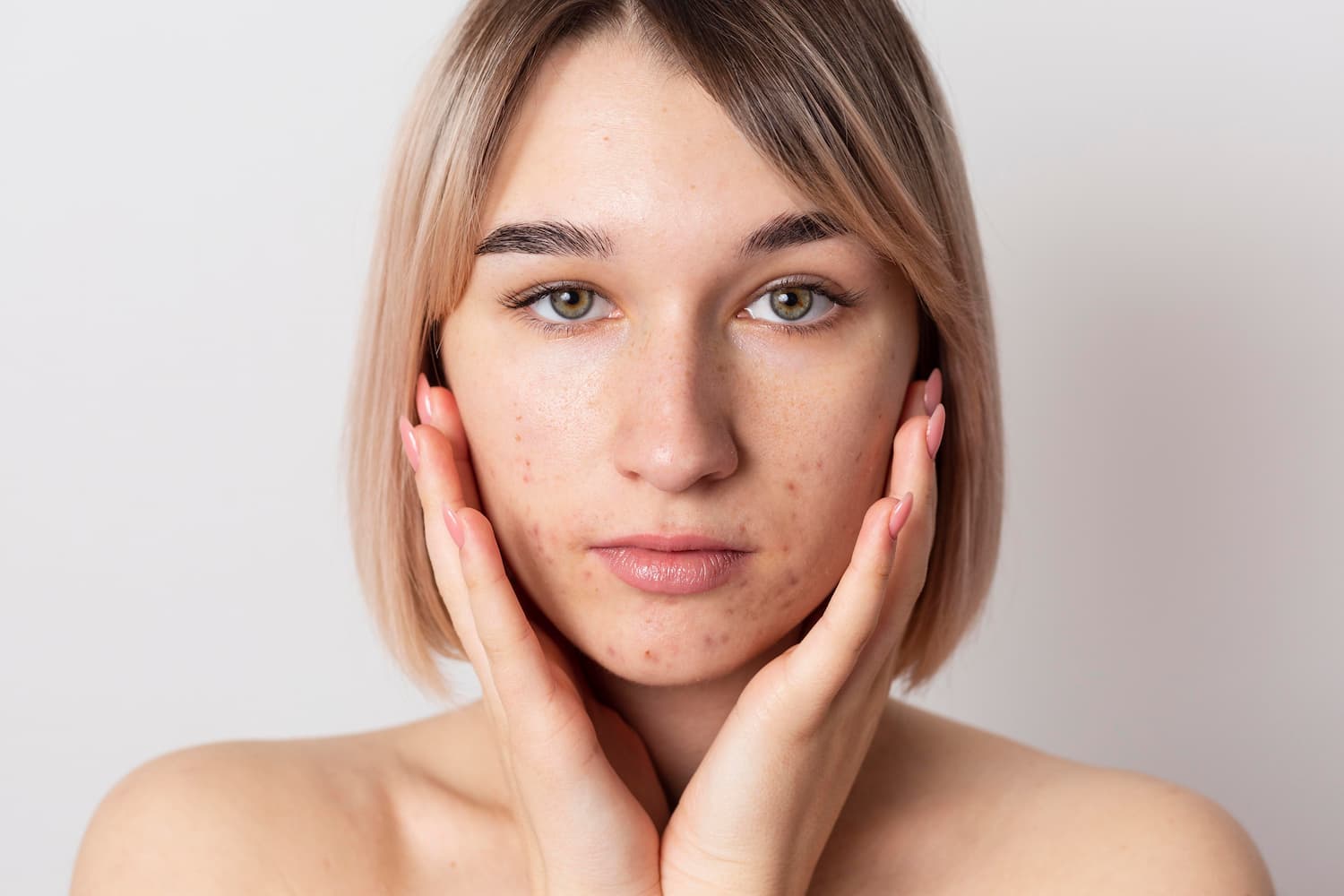
The cult drug Benzacne owed its effectiveness precisely to benzoyl peroxide. Since its withdrawal, many damaging myths have arisen about this substance. Here we debunk them.
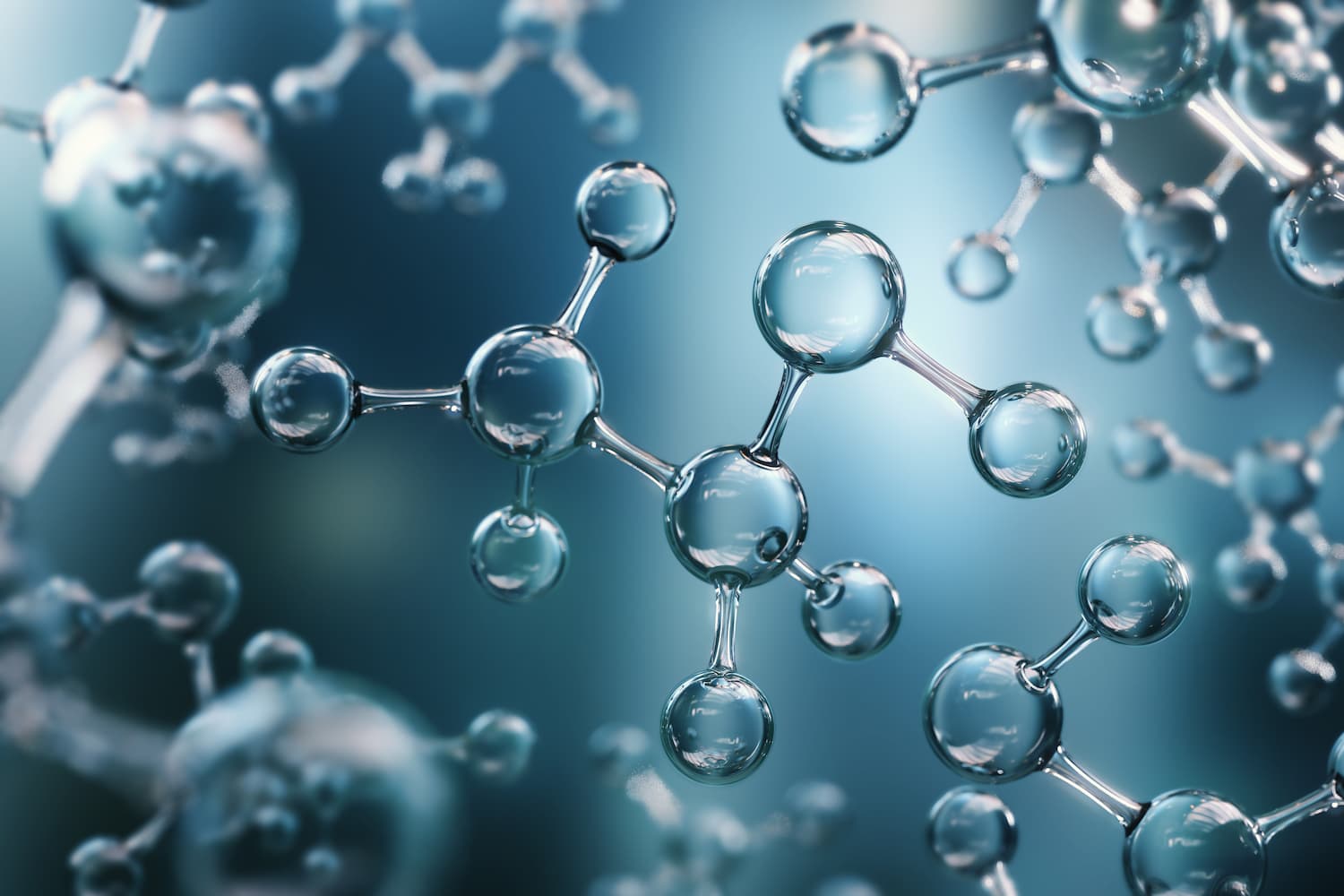
Do you already use niacinamide products in your daily skincare routine? If not, it's time to start.
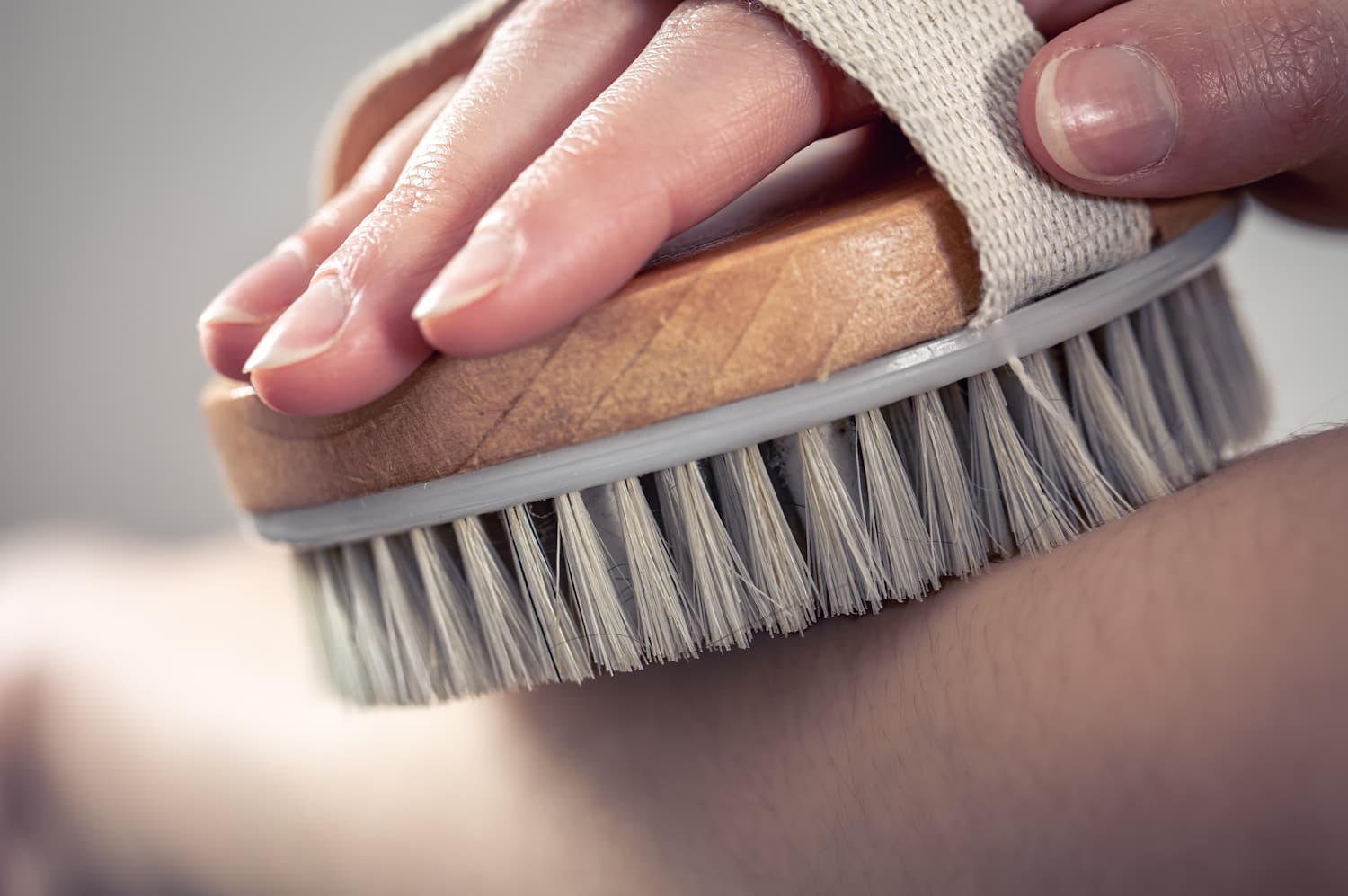
A technique that I used to completely disbelieve in, but is now a daily part of my skincare routine. Have a read and (I hope) it will be the same with you.

